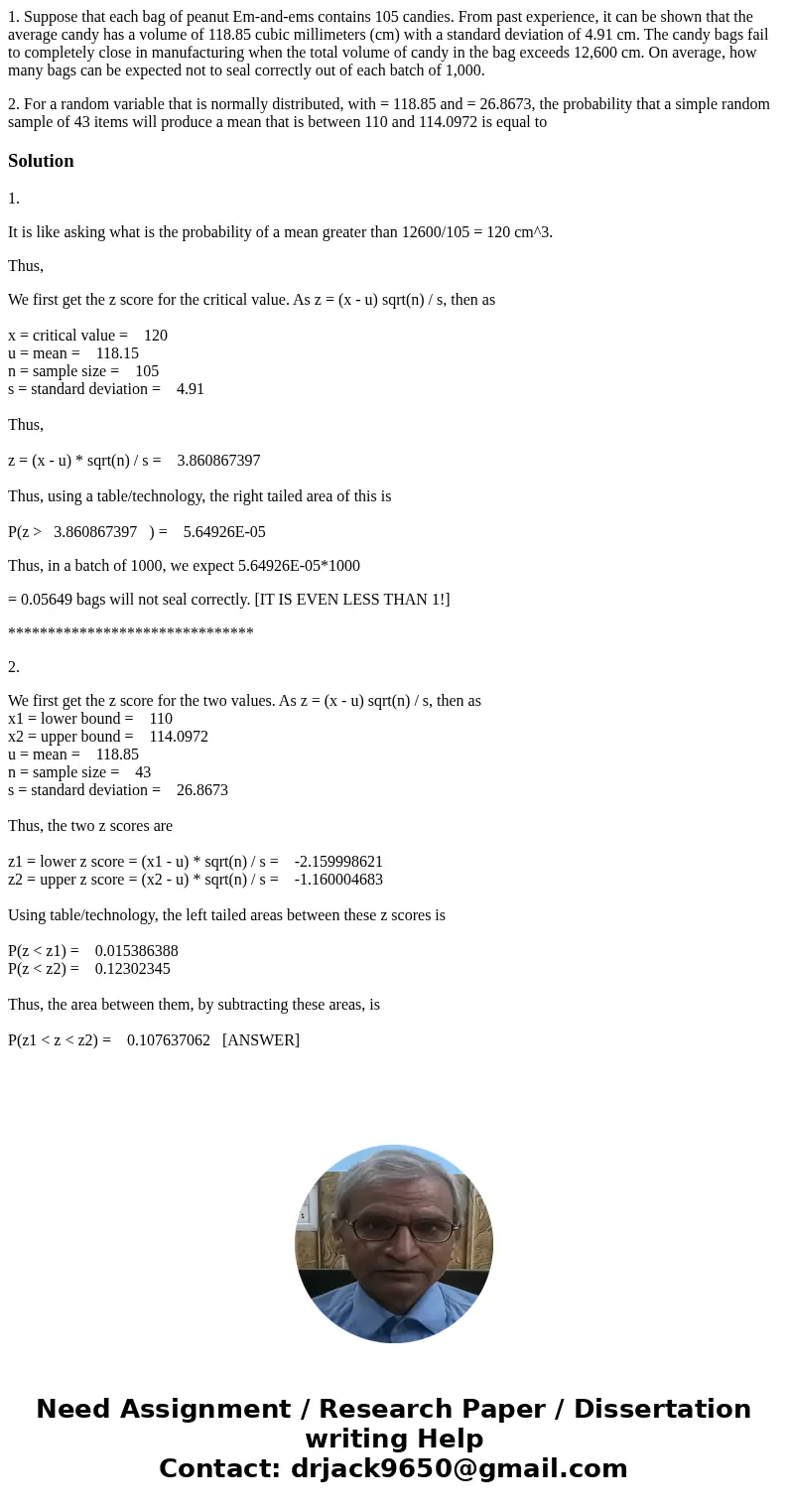1 Suppose that each bag of peanut Emandems contains 105 cand
1. Suppose that each bag of peanut Em-and-ems contains 105 candies. From past experience, it can be shown that the average candy has a volume of 118.85 cubic millimeters (cm) with a standard deviation of 4.91 cm. The candy bags fail to completely close in manufacturing when the total volume of candy in the bag exceeds 12,600 cm. On average, how many bags can be expected not to seal correctly out of each batch of 1,000.
2. For a random variable that is normally distributed, with = 118.85 and = 26.8673, the probability that a simple random sample of 43 items will produce a mean that is between 110 and 114.0972 is equal to
Solution
1.
It is like asking what is the probability of a mean greater than 12600/105 = 120 cm^3.
Thus,
We first get the z score for the critical value. As z = (x - u) sqrt(n) / s, then as
x = critical value = 120
u = mean = 118.15
n = sample size = 105
s = standard deviation = 4.91
Thus,
z = (x - u) * sqrt(n) / s = 3.860867397
Thus, using a table/technology, the right tailed area of this is
P(z > 3.860867397 ) = 5.64926E-05
Thus, in a batch of 1000, we expect 5.64926E-05*1000
= 0.05649 bags will not seal correctly. [IT IS EVEN LESS THAN 1!]
*******************************
2.
We first get the z score for the two values. As z = (x - u) sqrt(n) / s, then as
x1 = lower bound = 110
x2 = upper bound = 114.0972
u = mean = 118.85
n = sample size = 43
s = standard deviation = 26.8673
Thus, the two z scores are
z1 = lower z score = (x1 - u) * sqrt(n) / s = -2.159998621
z2 = upper z score = (x2 - u) * sqrt(n) / s = -1.160004683
Using table/technology, the left tailed areas between these z scores is
P(z < z1) = 0.015386388
P(z < z2) = 0.12302345
Thus, the area between them, by subtracting these areas, is
P(z1 < z < z2) = 0.107637062 [ANSWER]

 Homework Sourse
Homework Sourse